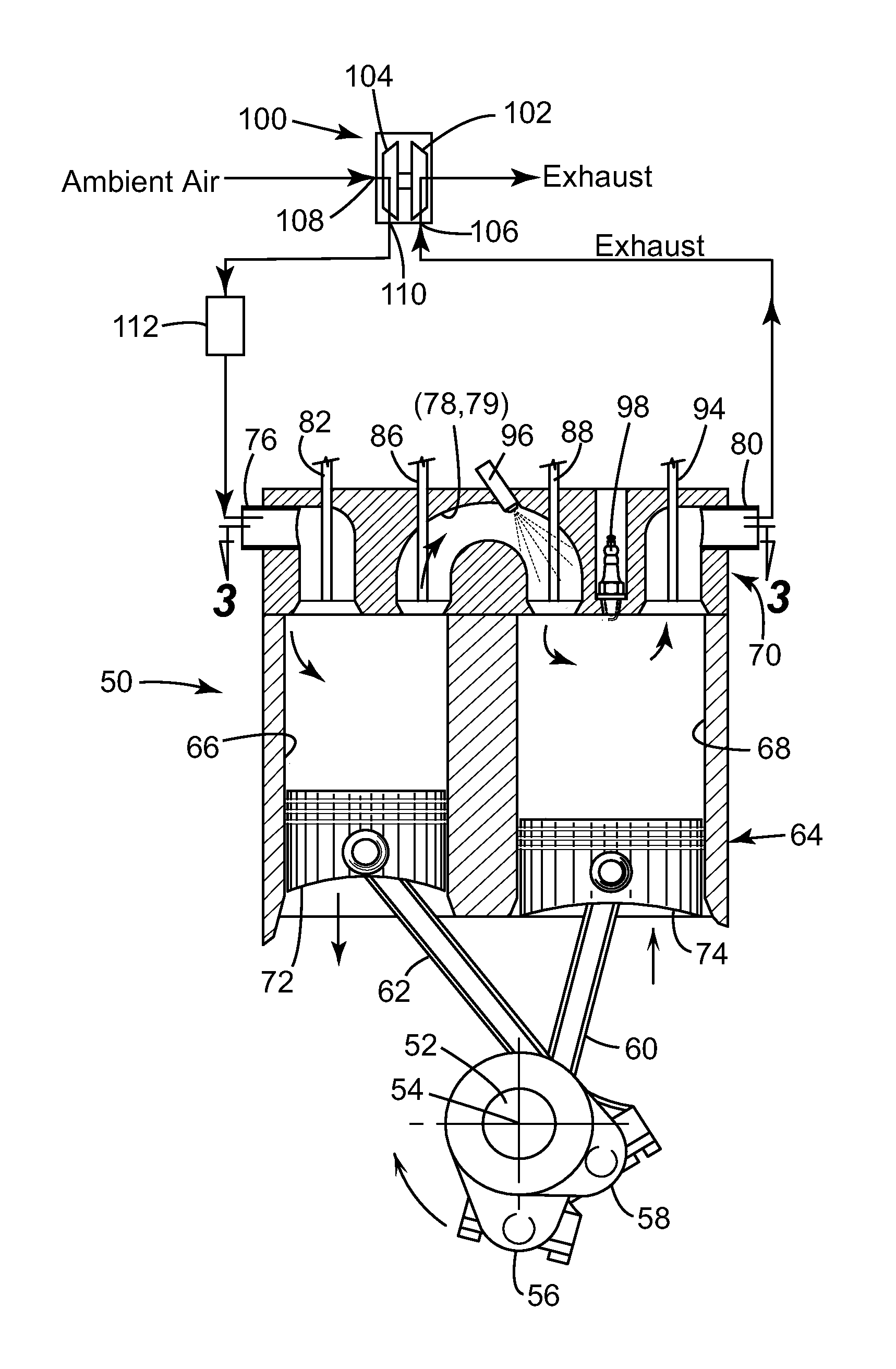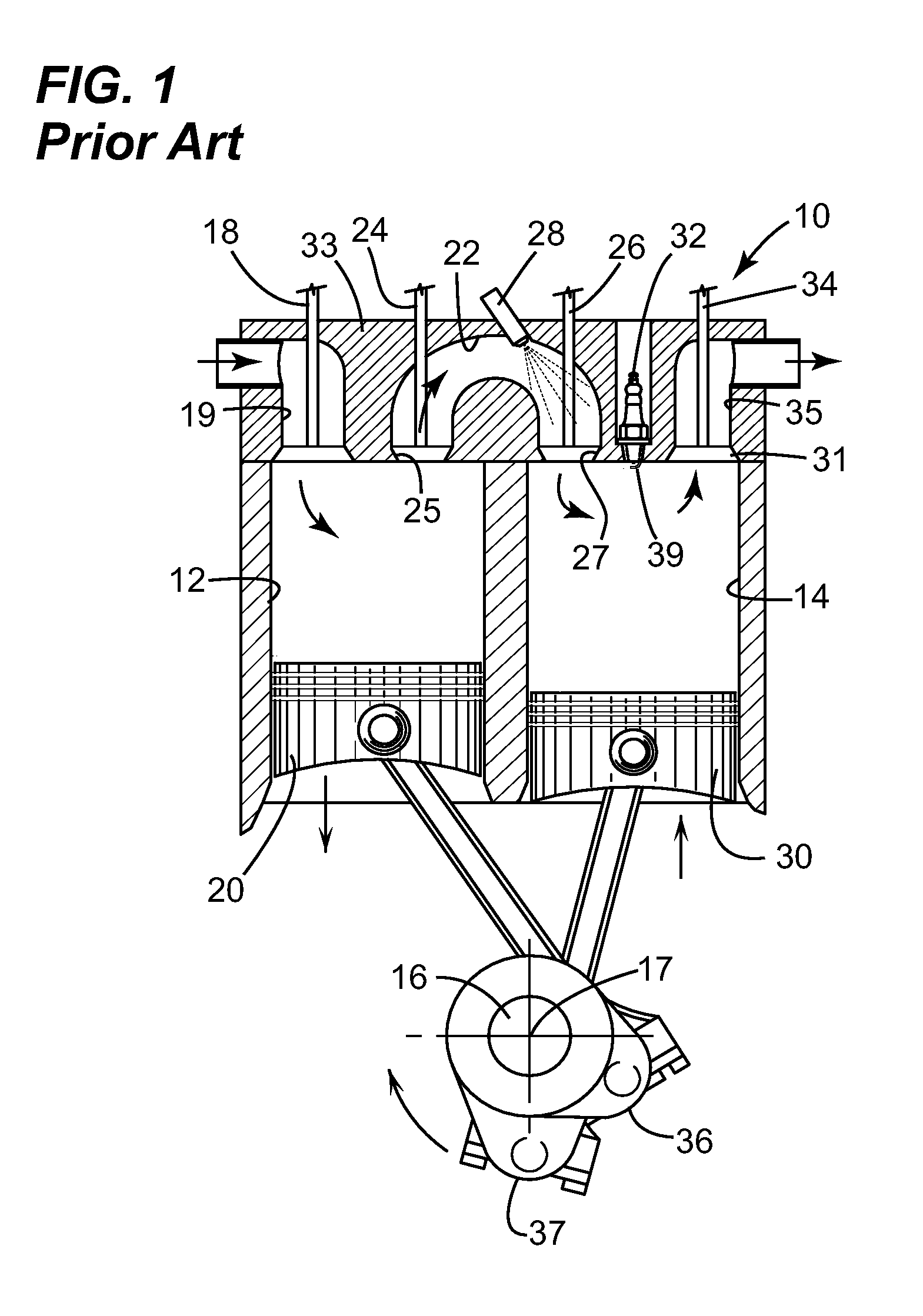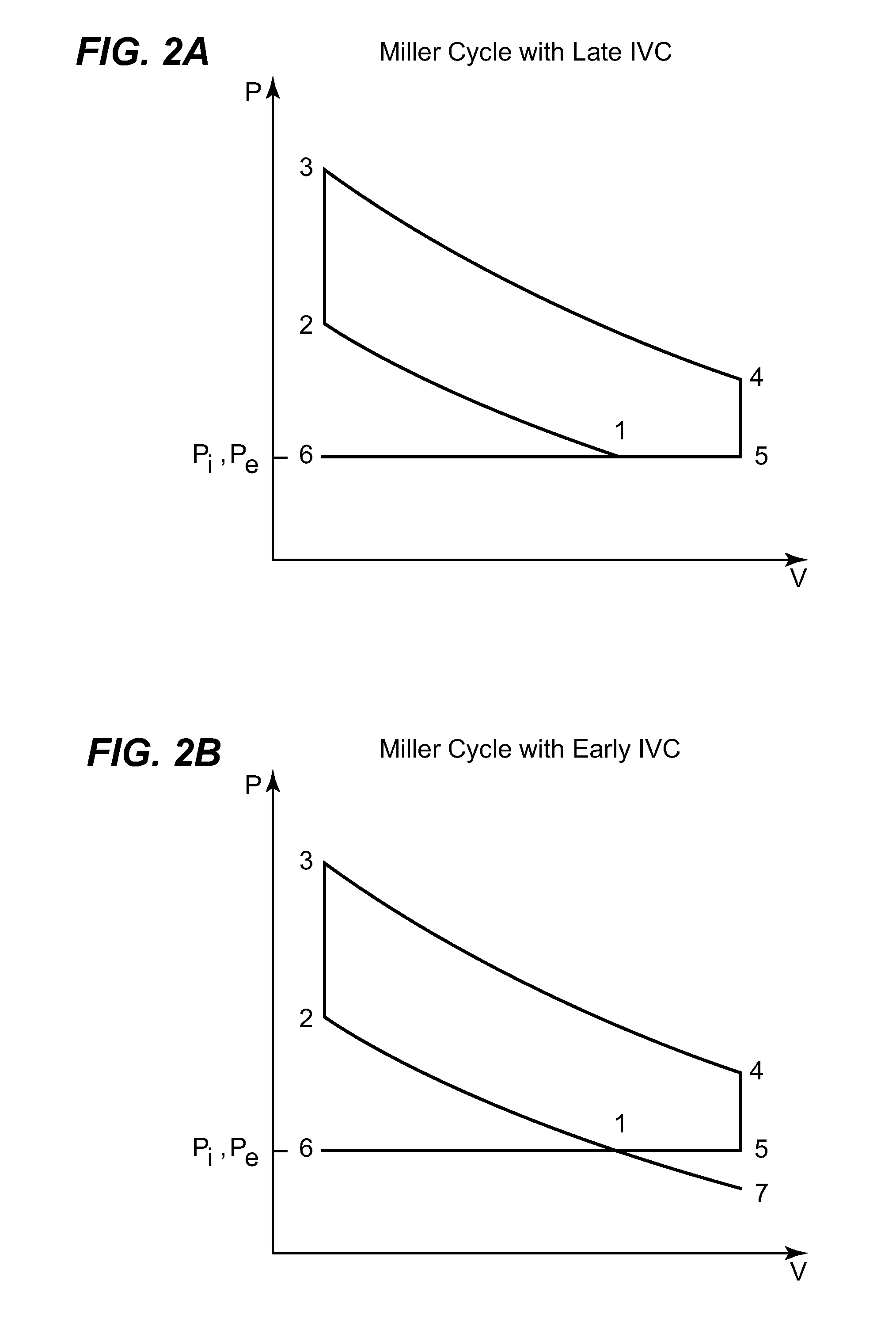Turbocharged downsized compression cylinder for a split-cycle engine
a compression cylinder and engine technology, applied in the field of internal combustion engines, can solve the problem that a part of the displacement must necessarily be wasted, and achieve the effect of reducing pumping work, optimum volumetric efficiency, and reducing “cos
- Summary
- Abstract
- Description
- Claims
- Application Information
AI Technical Summary
Benefits of technology
Problems solved by technology
Method used
Image
Examples
Embodiment Construction
[0051]The following glossary of definitions of acronyms and terms used herein is provided for reference and clarity.
Bar: Unit of pressure, 1 bar=105 N / m2.
Bar-abs (Bar-absolute): Pressure referenced to a complete vacuum, i.e., standard atmospheric pressure equals 1.013 bar-absolute.
[0052]BMEP: Brake mean effective pressure. The term “Brake” refers to the output as delivered to the crankshaft (or output shaft), after friction and parasitic losses (FMEP) are accounted for. Brake Mean Effective Pressure (BMEP) is the engine's brake torque output expressed in terms of a mean effective pressure (MEP) value. BMEP is proportional to the brake torque divided by engine displacement. This is the performance parameter taken after the losses due to friction. Accordingly, BMEP=IMEP−FMEP. Friction, in this case is usually also expressed in terms of an MEP value known as Friction Mean Effective Pressure (or FMEP). In this definition, a typical friction value (loss) would be a positive value of FMEP...
PUM
 Login to View More
Login to View More Abstract
Description
Claims
Application Information
 Login to View More
Login to View More - R&D
- Intellectual Property
- Life Sciences
- Materials
- Tech Scout
- Unparalleled Data Quality
- Higher Quality Content
- 60% Fewer Hallucinations
Browse by: Latest US Patents, China's latest patents, Technical Efficacy Thesaurus, Application Domain, Technology Topic, Popular Technical Reports.
© 2025 PatSnap. All rights reserved.Legal|Privacy policy|Modern Slavery Act Transparency Statement|Sitemap|About US| Contact US: help@patsnap.com



